
The Dagwort Coombe Murder is a 1929 mystery detective novel by the Irish-born writer Lynn Brock. It was the first stand-alone novel by Brock following the success of his Golden age detective Colonel Gore. It was published in the United States with the alternative title The Stoke Silver Case.
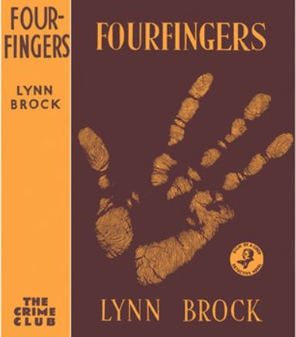
Fourfingers is a 1939 mystery detective novel by the Irish-born writer Lynn Brock. It was the second in his trilogy featuring the characters of Scotland Yard detective Sergeant Venn and Constable Kither. Writing in the Times Literary Supplement, reviewer Maurice Percy Ashley observed "Mr. Lynn Brock’s new book, Fourfingers, good though it is, is so closely written and so full of incident that it is a little heavy going for the reader in search of intellectual relaxation."

The Riddle of the Roost is a 1939 mystery detective novel by the Irish-born writer Lynn Brock. It was the third and last in his trilogy featuring the characters of Scotland Yard detective Sergeant Venn and Constable Kither. It was Brock's penultimate novel, followed the next year by The Stoat a final entry into the series of his best-known character Colonel Gore.
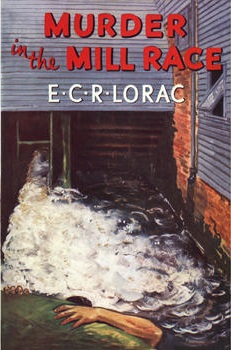
Murder in the Mill-Race is a 1952 detective novel by E.C.R. Lorac, the pen name of the British writer Edith Caroline Rivett. It is the thirty seventh in her long-running series featuring Chief Inspector MacDonald of Scotland Yard, one of the numerous detectives of the Golden Age of Detective Fiction. It was released in the United States under the alternative title Speak Justly of the Dead. Originally published by Collins Crime Club, it was reissued in 2019 by the British Library Publishing as part of a group of crime novels from the Golden Age of Detective Fiction.

Still Waters is a 1949 detective novel by E. C. R. Lorac, the pen name of the British writer Edith Caroline Rivett. It is the thirty second in her long-running series featuring Chief Inspector MacDonald of Scotland Yard, one of the more orthodox detectives of the Golden Age of Detective Fiction.
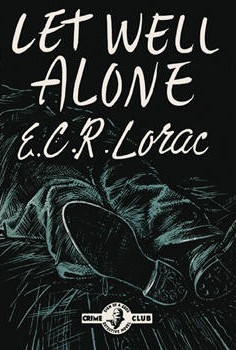
Let Well Alone is a 1954 detective novel by E.C.R. Lorac, the pen name of the British writer Edith Caroline Rivett. It is the fortieth in her long-running series featuring Chief Inspector MacDonald of Scotland Yard, one of the more orthodox detectives of the Golden Age of Detective Fiction.
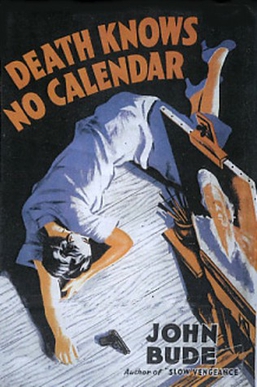
Death Knows No Calendar is a 1942 detective novel by the British writer John Bude. It was a stand-alone novel rather than one featuring his regular detective Superintendent Meredith. In this case the investigation is led by a former army officer Major Boddy. It takes the former of a locked room mystery with a closed circle of suspects, both popular variations of the genre during the period. Originally published by Cassell, in 2020 it was reissued by the British Library Publishing in a single edition with another Bude novel Death in White Pyjamas, as part of a series of republished crime novels from the Golden Age of Detective Fiction.
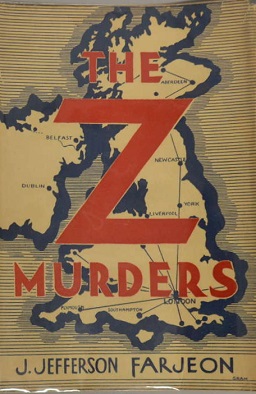
The Z Murders is a 1932 mystery crime novel by the British writer Joseph Jefferson Farjeon. It was originally published by Collins Crime Club, and in 2015 was reissued by the British Library Publishing as part of a group of republished crime novels from the Golden Age of Detective Fiction.
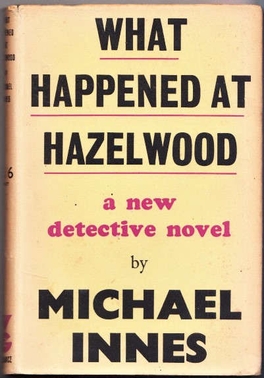
What Happened at Hazelwood is a 1946 detective novel by the British writer Michael Innes. It is a standalone novel from the author who was best known for his series featuring the Golden Age detective John Appleby. In this novel his role is fulfilled by Inspector Cadover who also appeared later in an Appleby novel A Private View. It takes the form of a country house mystery. Ralph Partridge writing in the New Statesman observed "Michael Innes may be a Professor of English in disguise but What Happened at Hazelwood would never win him a Chair of Detection. I suppose we should be grateful that it is not a surrealist thriller, and that Inspector Appleby is off duty."
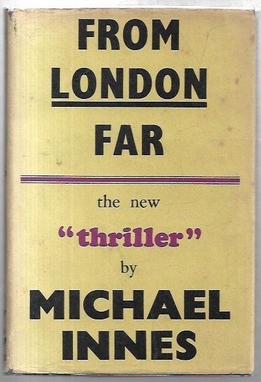
From London Far is a 1946 mystery thriller novel by the British writer Michael Innes. It is a standalone novel from the author who was best known for his series featuring the Golden Age detective John Appleby. Like much of Innes' work it contains elements of farcical humour. It was published the same year in the United States by Dodd, Mead under the alternative title The Unsuspected Chasm.

The Vultures Gather is a 1945 mystery detective novel by the British writer Anne Hocking. It was published in London by Geoffrey Bles. Written during the Golden Age of Detective Fiction, it is the seventh in her series featuring Chief Superintendent William Austen of Scotland Yard.

For Murder Will Speak is a 1938 detective novel by the British author Alfred Walter Stewart, published under his pseudonym J.J. Connington. It is the thirteenth in a series of novels featuring the Golden Age Detective Chief Constable Sir Clinton Driffield. The title references a line from Shakespeare's Hamlet. It was released in the United States by Little, Brown and Company under the alternative title Murder Will Speak.

A Minor Operation is a 1937 British detective novel by the British author Alfred Walter Stewart, published under his pseudonym J.J. Connington. It is the eleventh in a series of novels featuring the Golden Age Detective Chief Constable Sir Clinton Driffield and was published by Hodder and Stoughton in London and Little, Brown and Company in the United States. In a New York Times review Isaac Anderson noted Sir Clinton as being rare among Chief Constables in British mystery stories for his competence noting "If you have not previously met him in Mr. Connington’s other novels, this is a good time to make his acquaintance, for in this book you will see him at his best".

No Past Is Dead is a 1942 mystery detective novel by the British author Alfred Walter Stewart, published under his pseudonym J.J. Connington. It is the fifteenth in his series of novels featuring the Golden Age Detective Sir Clinton Driffield, the Chief Constable of a rural English county. It was published by Hodder and Stoughton in London and Little, Brown and Company in the United States.

Toper's End is a 1942 detective novel by the British authors G.D.H. Cole and Margaret Cole. It was the final entry in their series of over twenty books dating back to 1923 featuring Superintendent Wilson, a former officer of Scotland Yard turned Private Detective. Part of the Golden Age of Detective Fiction, it takes place against the backdrop of the Second World War. It was published by the Collins Crime Club.

Murder at the Munition Works is a 1940 detective novel by the British husband and wife writing team G.D.H. Cole and Margaret Cole. One of the later entries into their series of Golden Age series featuring Superintendent Wilson of Scotland Yard, it was the first to be released following the outbreak of the Second World War. It was published by the Collins Crime Club and released by Macmillan in the United States.

Death in the Quarry is a 1934 detective novel by the British authors G. D. H. Cole and Margaret Cole. It was the twelfth in their series of novels featuring Superintendent Wilson, one of the many investigators of the Golden Age of Detective Fiction. It was published by the Collins Crime Club.

As a Thief in the Night is a 1928 detective novel by the British author R. Austin Freeman. Part of his long-running series of novels featuring the forensic investigator Doctor Thorndyke, it was published in London by Hodder and Stoughton and in New York City by Dodd, Mead.

Death Is No Sportsman is a 1938 detective novel by the British writer Cyril Hare. It was his second novel to feature Inspector Mallett of Scotland Yard. Written during the Golden Age of Detective Fiction, it was published by Faber and Faber. The sport of the title refers to angling.

Tragedy at Law is a 1942 mystery detective novel by the British author Cyril Hare. It is the first of five novels featuring the lawyer Francis Pettigrew, an amateur detective. It also features Inspector Mallet of Scotland Yard who had appeared in three previous novels by Hare and would return in two further Pettigrew novels. It takes place over a period of several months from September 1939, shortly after the outbreak of the Second World War, to April 1940. It has been considered as Hare's finest book.




















